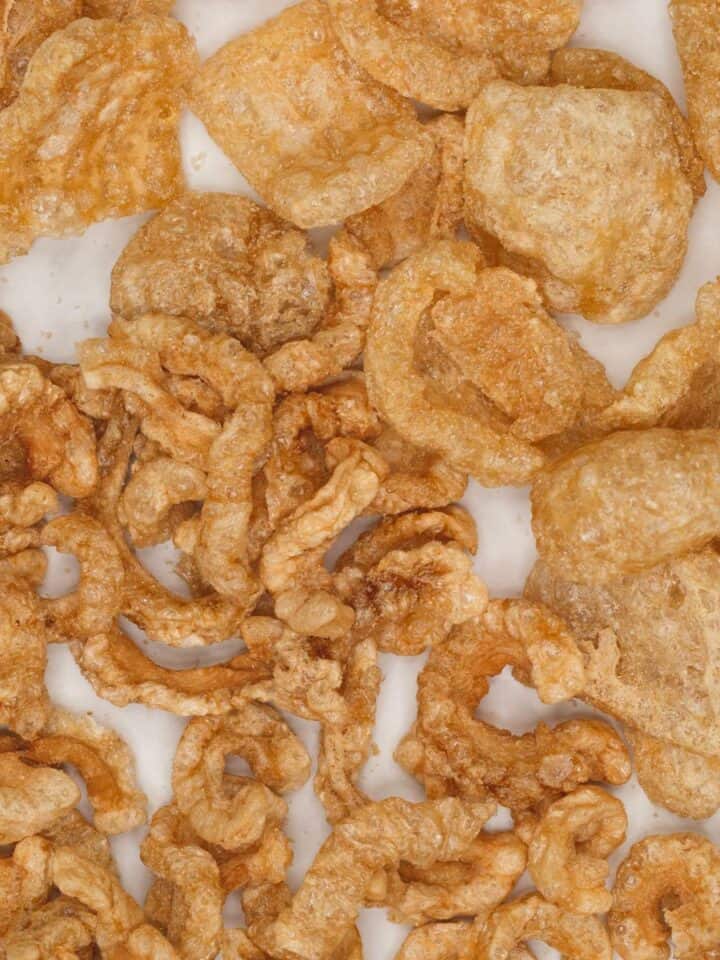Cassava (Kamoteng Kahoy) is a versatile root vegetable that holds a special place in Filipino cuisine. Let's explore the wonders of cassava, from its diverse culinary uses to its health benefits. Learn how to select and store cassava and discover why it is a beloved ingredient in the Philippines.

Jump to:
What is cassava?
Cassava, also called yuca or manioc, is locally known as kamoteng kahoy in the Philippines. It is a starchy root vegetable and a staple crop in many tropical countries.
Native to South America, it ranks as the third-largest source of carbohydrates in the tropics, after rice and maize. It has a long, tapered shape and rough, brown outer skin. Its flesh is white or yellowish and has a fibrous texture.
It is naturally gluten-free, like sweet potato, yam, and taro. Cassava flour, tapioca starch, and tapioca pearls are derived from cassava roots.
Is cassava healthy?
According to Healthline, cassava is rich in carbohydrates, fiber, and Vitamin C. It is a good source of copper, which plays a role in neurotransmitter synthesis, iron metabolism, and energy production. It also contains thiamin, folate, potassium, and magnesium.
It contains resistant starch, which does not digest in the small intestine and reaches the large intestine intact. It acts as a prebiotic that promotes the growth of beneficial gut bacteria, improves insulin sensitivity, lowers blood sugar levels, reduces inflammation, and increases satiety.
Although cassava has many benefits, it lacks nutritional value and may have some downsides. It is low in protein and high in carbohydrates, an issue with people with diabetes or managing their blood sugar levels. The presence of resistant starch can also cause digestive problems like bloating and gas.
Medical News Today states that it contains cyanide compounds, which can be toxic if not processed properly. The New York State Department of Health warns that while the human body can detoxify small amounts of cyanide, consuming large amounts of raw or improperly prepared cassava can be harmful.

How do you remove cyanide from cassava?
Cyanide is a naturally occurring substance found in some plants, like cassava roots, bitter almonds, and lima beans. Cassava can be classified into two types: sweet and bitter cassava, with different amounts of cyanogenic glycosides that release cyanide when eaten raw or improperly processed.
The sweet variety is low in cyanide and is safe to eat when cooked well. It is commercially available and can be found in many supermarkets.
The bitter variety is high in cyanide and can be toxic. It is not commonly sold in supermarkets, but certain cultures use it in traditional dishes. It requires careful processing to remove the toxins before consumption.
Seek guidance from a knowledgeable source, such as a local expert or health professional, before consuming the bitter variety. Improper processing can result in serious health risks, including cyanide poisoning.
How to buy
Cassava is sold fresh or frozen in Asian and Latin American supermarkets, as well as well-stocked grocery stores. Fresh cassava should be firm with no cracks, soft spots, or signs of mold. The root is typically coated with wax to help preserve it.
A smaller size may be more tender and less fibrous than a larger one. Its flesh should be white, sometimes yellowish, with no discoloration or dark streaks. It should not be mushy or stringy.
For frozen cassava, choose a well-sealed package with no discoloration or signs of freezer burn.
If you want to learn how to prepare cassava, don't miss our step-by-step guide.

How to store
Store it in a cool, dry place. It should not be refrigerated as it can spoil and develop mold. Do not wash before storing. For best results, use it within a few days after purchase. You can peel it, cut it into pieces, and freeze it to extend its shelf life.
Filipino recipes with cassava
Cassava is a staple ingredient in Filipino desserts or snacks, known for adding a unique texture and a touch of sweetness to beloved dishes. Here are some of our favorites:
- Cassava Cake: Also known as Cassava Bibingka, it is a baked dessert made with grated cassava, coconut milk, and condensed milk.
- Pichi-Pichi: Steamed cakes made with grated cassava and sugar, then coated with freshly grated coconut.
- Cassava Suman: A type of rice cake wrapped in banana leaves made with grated cassava, brown sugar, and coconut milk.
- Ginataang Bilo-Bilo: A warm, soup-like dessert with sticky rice balls cooked in coconut milk and other ingredients like cassava, ube, saba bananas, jackfruit, and sago.
- Ginataang Kamoteng Kahoy: A sweet and creamy dessert or snack made by simply boiling cassava with coconut milk and sugar.
- Kamoteng Kahoy Chips: Similar to potato chips, these cassava chips are thinly sliced and fried to a crisp.
- Cassava Carioca: Sweet and chewy fried cassava balls made with ground cassava, deep-fried, and coated in caramel.

Other ingredient guides you may like

Do you like this post? I would love to know! Your feedback helps me make better recipes. Please rate, review, or comment below. Questions about this post are welcome, too!
Let's connect on Facebook, Instagram, Pinterest, TikTok, Twitter, and Youtube. Be sure to tag me when you try any of my recipes @recipesbynora!











Jasmine
I remember my lola making boiled cassava with coconut milk and sugar. It’s just the most delicious thing ever. I hope i can replicate it.
Nora Rey
Hi Jasmine! Yum! Your lola's boiled cassava sounds like a real treat. I'm sure with some practice, you'll be able to recreate her recipe.